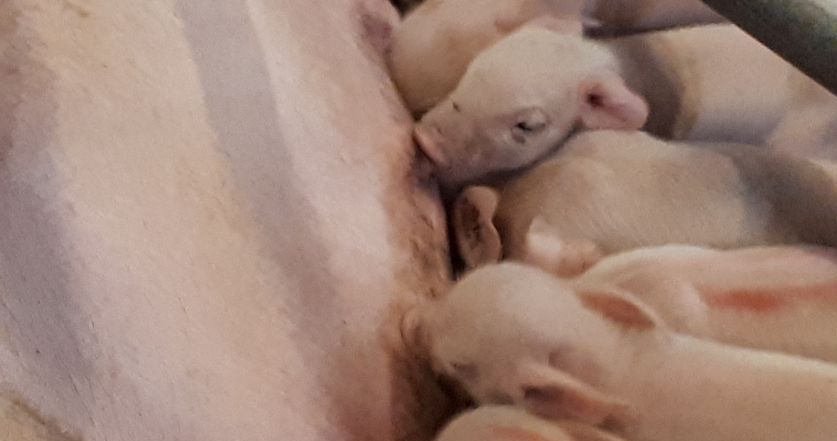Focus points in the first week after farrowing
The first week after farrowing requires the most attention for the sows and the newborn piglets. We have collected some focus points that are essential for the successful management of the first week.
Point 1: As we know the most important thing after the birth of a piglet is to get the colostrum milk from their own mother if it is possible in the first 24 hours. The importance of the colostrum milk is to get a high immune piglet in our production. Especially in farms where genetics is already bringing in high numbers of piglets is very important to implement the split milking and to have a real control over the procedure. This figure shows how the immunoglobulin levels differ 48 hours after farrowing.
How can we adapt in practice to make sure that all our piglets have gotten the right, or as much as possible colostrum, specially by those genetics with high liveborn piglets’ amount?
Point 2: It is important that whatever process we introduce in any sector of our production, it must be controllable by everyone otherwise a chaotic situation can develop. A good example of this in the management of a newborn piglet is the split milking. With this method, we can achieve that all vital piglets have access to the colostrum during the first 24 hours after farrowing.
Low energy balance can cause digestive problems. If you have an energetic piglet, it can take up colostrum, but what is very important is not to try any oral energy replacement until piglet hasn’t get colostrum milk. In practice, with a slight grasp on the stomach, it can be perceived whether the pig’s stomach is empty or not. If the stomach is saturated, it is also recommended to use oral energy supplements, especially for weaker piglets.
Point 3: Nursing or litter adjustment is also an important segment of the first week management. The point is that our piglets start their life with equal chance for life as much as possible. 24-48 hours after nursing-litter balancing is decisive, then we have to observe the welfare of all sows and piglets and visualize the problematic individuals and piglets with markings and, if possible, treat the problems on the same day (e.g. sows' health, feeding curve, weakening piglet etc.)
Point 4: It is important to mention that the sow's daily feed intake, slightly rising feed curve, and daily water intake also play an important role. This should be controlled individually for each sow. In order to make the most out of the sow’s milk production potential, feeding the sow requires extreme care. "As the feed curve is the sow's milk production curve"
Point 5: LV5 is actually used in breeding farms where LV5 is one segment of the animal INDEX number. In addition, LV5 is also important for us, as these days determine the further development of the pig - even until the end of the fattening. We will discuss this in a next article.
